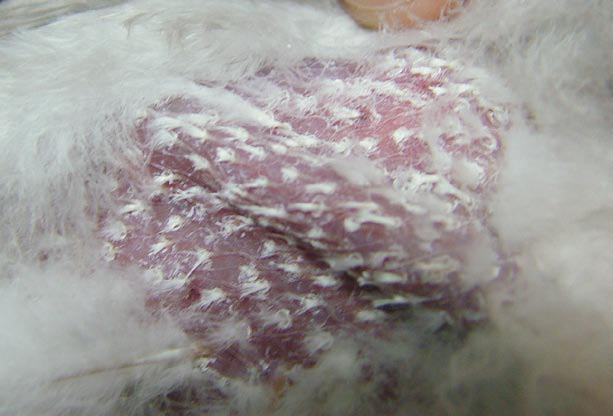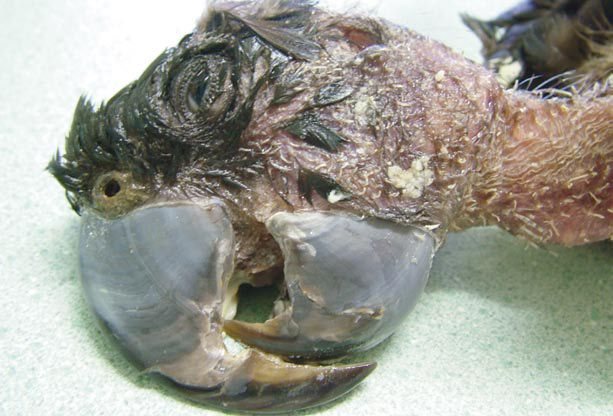Revisited
Words and Photographs by Dr Bob Doneley
BVSc FACVSc (Avian Health)
Psittacine Beak and Feather Disease (PBFD) has been
with us for a long time—the earliest reports were in wild Red-rumped Parrots in the late 1800s—and it continues to give both bird owners and veterinarians headaches and heartbreak. As with any common problem, we need to periodically revisit this disease—go back and look at it again and refresh everyone’s memory, particularly with the
breeding season just around the corner.
Early thoughts about the causes of PBFD ranged from an all-seed diet (especially sunflower) to a bacterial infection that would respond to antibiotics. In the late 1970s Ross Perry, one of the most observant avian veterinarians I know, began studying this disease and formulated the theory that it was a viral infection. He and David Pass were able to demonstrate that it was an infectious disease that could be transmitted readily from bird to bird. In particular, Ross was able to catalogue the range of clinical signs seen with this disease and gave it a name—Psittacine Beak and Feather Dystrophy. Since this early groundbreaking work, other researchers (especially Garry Cross and Shane Raidal in Australia and Branson Ritchie in the USA) have been able to isolate the virus responsible and develop reliable testing methods. The result is that we now know much more about this disease, but there is still much more to learn. In fact, Shane Raidal recently told me that a researcher could easily spend a lifetime researching this virus and the disease it causes, and still not uncover all of its secrets—this from a man holding a PhD focussing on understanding it!
So what do we know?
PBFD in a Red-tailed Black Cockatoo—although not commonly affected, this species is still susceptible.
Powder-down feathers in a Sulphur-crested Cockatoo displaying PBFD.
PBFD is caused by Psittacine Circovirus, better known as PBFD Virus or PBFDV. This is one of the tiniest viruses known to humans—a reason why it escaped detection for so long. It infects all parrot species, although South American species (macaws, Amazons and conures) are less frequently affected. Interestingly, Cockatiels are rarely affected as well—another area waiting for a researcher to devote time to! It is now believed that PBFD is an Australian disease which spread to the rest of the world with the exportation (both legal and illegal) of Australian parrots over the past 200 years. Most Australian, Asiatic and African species are extremely susceptible to PBFD
and the disease is now found throughout the world where these species are kept. The clinical signs vary greatly, depending on the species and age of the infected bird, and the state of moult it was in when first infected.
There is an acute form of this disease, which fortunately is relatively uncommon. It occurs in juvenile birds, usually at fledging. The virus attacks the bone marrow and destroys it—resulting in anaemic birds with no defence against disease. Affected chicks often die within days. Because Grey Parrot chicks are particularly sensitive to this form of the disease, they should never be housed with other susceptible species such as lovebirds, cockatoos and lorikeets. The more common form is a chronic disease affecting the feathers and, in cockatoos, the beak. Lesions typically develop in the following order: powder down, contour feathers, primary feathers, secondaries, tail and then finally crest feathers. This order reflects the rate at which these feathers are moulted. The powder-down feathers are continually turning over, so any disease affecting them will quickly become apparent. As feathers are infected they become abnormal (dystrophic).



